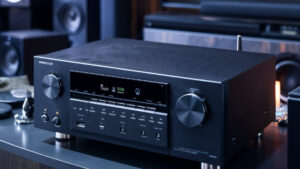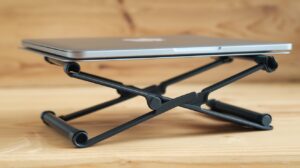To use a gimbal stabilizer, first mount your camera securely onto the device. Then, power it on and follow the calibration instructions.
Gimbal stabilizers are essential tools for achieving smooth, cinematic shots. They help eliminate shaky footage, making your videos look professional. Whether you’re filming a wedding, a travel vlog, or a short film, mastering a gimbal can elevate your content. Understanding how to balance and operate a gimbal will enhance your filming experience.
With the right techniques, you’ll capture stunning visuals that engage your audience. This guide will walk you through the basics of using a gimbal stabilizer effectively. Get ready to improve your filming skills and create breathtaking videos with ease. Enjoy the process, and let your creativity shine!
Introduction To Gimbal Stabilizers
Gimbal stabilizers are essential tools for smooth video recording. They help eliminate unwanted shakes and vibrations. This technology improves video quality significantly. Both amateurs and professionals benefit from using gimbals.
The Role Of Gimbals In Videography
Gimbals play a crucial role in modern videography. They stabilize the camera while filming. This creates a professional look in videos. Here are some key benefits:
- Smooth Footage: Gimbals ensure steady shots.
- Improved Creativity: Filmmakers can explore unique angles.
- Easy to Use: Most gimbals are user-friendly.
Types Of Gimbals: Handheld Vs. Wearable
Understanding gimbal types is important. Handheld and wearable gimbals serve different purposes. Here’s a quick comparison:
| Feature | Handheld Gimbals | Wearable Gimbals |
|---|---|---|
| Usage | Held in hand for stability | Mounted on body for freedom |
| Mobility | Good for controlled shots | Great for action shots |
| Weight | Generally heavier | Lighter and more portable |
Choose the right gimbal based on your needs. Handheld gimbals suit planned shots. Wearable gimbals excel in dynamic environments.

Choosing The Right Gimbal
Selecting the perfect gimbal stabilizer enhances your filming experience. It ensures smooth, steady shots. Understanding your needs is vital for making the right choice.
Factors To Consider
Several factors influence your gimbal choice. Consider the following:
- Weight Capacity: Ensure it can handle your camera’s weight.
- Battery Life: Look for longer battery durations for extended shoots.
- Portability: Choose a lightweight model for easy transport.
- Stabilization Type: Opt for 3-axis stabilization for smoother footage.
- Ease of Use: Select a user-friendly interface for quick setup.
Top Brands And Models
Several brands lead the gimbal market. Here are some top choices:
| Brand | Model | Key Features |
|---|---|---|
| DJI | Ronin-S | Lightweight, 3-axis stabilization, long battery life |
| Zhiyun | Crane 3 Lab | Innovative design, versatile, excellent load capacity |
| FeiyuTech | AK2000 | Easy operation, powerful motors, compact |
These brands offer reliable options. Each model serves different filming needs. Assess your requirements to select the best fit.
Setting Up Your Gimbal
Setting up your gimbal stabilizer is essential for smooth footage. A well-prepared gimbal makes filming easier. Follow these steps to ensure your gimbal is ready for action.
Mounting The Camera
Mounting your camera correctly is the first step. Use the following steps:
- Locate the mounting plate on your gimbal.
- Attach the camera securely to the plate.
- Use the locking mechanism to hold the camera in place.
Check the camera’s position. It should face forward. Ensure the lens is unobstructed. This setup prevents any unwanted movements.
Balancing Basics
Balancing your gimbal is crucial for stability. Follow these simple tips:
- Loosen the tilt and roll axes.
- Adjust the camera’s position until it stays level.
- Lock the axes once the balance is correct.
Use this table to understand balance adjustments:
| Adjustment | Action |
|---|---|
| Front/Back Balance | Move the camera forward or backward. |
| Side to Side Balance | Adjust the camera left or right. |
| Roll Axis | Make sure the camera stays upright. |
Balancing may take time. Practice leads to perfection. A balanced gimbal ensures smooth, cinematic shots.
Mastering Gimbal Movements
Mastering gimbal movements enhances video quality. Smooth, steady shots impress viewers. Learn key techniques for effective gimbal use.
Pan And Tilt Techniques
Pan and tilt are basic gimbal movements. They create dynamic shots and add depth.
- Pan: Move the gimbal left or right.
- Tilt: Move the gimbal up or down.
To execute these movements:
- Hold the gimbal steady.
- Use slow, smooth motions.
- Keep your body aligned with the shot.
Practice these techniques often. They will improve your filming skills.
Smooth Tracking Shots
Smooth tracking shots create engaging narratives. They guide viewers through scenes.
Follow these steps for effective tracking shots:
- Set the Scene: Know your path and plan the shot.
- Adjust the Gimbal: Ensure it’s balanced and ready.
- Use Your Feet: Walk slowly and steadily.
- Maintain Focus: Keep your subject in the center.
Tip: Use a wide-angle lens. This enhances the tracking effect.
Advanced Gimbal Techniques
Mastering your gimbal opens up creative possibilities. Explore advanced techniques to elevate your videography. These methods allow for stunning shots and smooth movements.
Inception Mode
Inception mode creates a unique spinning effect. This technique mimics the famous movie scenes. Follow these steps to achieve it:
- Set your gimbal to follow mode.
- Hold the gimbal horizontally.
- Slowly rotate your body while moving.
- Keep the camera level to the ground.
Practice this technique in various locations. It works well in urban settings and nature.
Timelapse And Motionlapse
Timelapse captures changes over time. Motionlapse adds movement to your timelapse shots. Here’s how to create stunning sequences:
| Technique | Steps |
|---|---|
| Timelapse |
|
| Motionlapse |
|
Experiment with different subjects. Capture clouds, sunsets, or busy streets.
Troubleshooting Common Gimbal Issues
Gimbals can enhance your filming experience. However, sometimes they face issues. Understanding how to troubleshoot these problems is essential. This section covers common gimbal issues and their fixes.
Calibration Problems
Calibration is crucial for smooth operation. Miscalibrated gimbals can lead to shaky footage. Here are some signs of calibration problems:
- Unstable footage
- Camera tilts unexpectedly
- Gimbal does not level correctly
To calibrate your gimbal:
- Power on the gimbal.
- Place it on a flat surface.
- Access the calibration mode via the app or buttons.
- Follow on-screen instructions for calibration.
After calibration, test the gimbal again. Ensure it operates smoothly.
Battery And Power Solutions
Battery issues can disrupt filming. A drained battery can halt your shoot. Here are some common battery problems:
- Gimbal won’t power on
- Short battery life
- Overheating during use
To resolve battery and power issues:
- Charge the battery fully before use.
- Use the correct charger and cable.
- Store the battery in a cool, dry place.
Monitor battery health regularly. Replace old batteries to maintain performance.
| Battery Issue | Solution |
|---|---|
| Won’t power on | Charge the battery fully. |
| Short battery life | Check for firmware updates. |
| Overheating | Limit usage time and take breaks. |
Always keep spare batteries handy. This ensures a smooth shooting experience.
Creative Uses For Gimbals
Gimbals are versatile tools that enhance your video quality. They stabilize your footage, making it smooth and professional. Explore creative ways to use gimbals for stunning visuals.
Action Scenes
Action scenes require dynamic movement. Gimbals help capture fast-paced moments without shakes. Use these tips for better action shots:
- Run with your gimbal for smooth tracking shots.
- Incorporate quick pans to follow the action.
- Use low angles for dramatic effects.
Experiment with different speeds. Faster movements create excitement. Slow movements build suspense. Always keep your subject in focus for clarity.
Dynamic Landscapes
Gimbals enhance landscape shots dramatically. They create fluid motion that captivates viewers. Here’s how to use gimbals for landscapes:
- Walk slowly through scenic areas.
- Pan across the horizon for breathtaking views.
- Combine gimbal shots with time-lapses for stunning effects.
Adjust the height of your gimbal. This change adds depth to your shots. Capture different angles for unique perspectives. Remember to plan your route for optimal footage.
Maintaining Your Gimbal
To keep your gimbal stabilizer functioning well, maintenance is key. Regular care prevents issues and extends the life of your device. Two critical aspects are cleaning practices and firmware updates.
Cleaning Practices
Proper cleaning keeps your gimbal in top shape. Dust and grime can affect performance. Follow these steps for effective cleaning:
- Use a microfiber cloth: Wipe down surfaces gently.
- Avoid liquids: Never spray cleaners directly on the gimbal.
- Check the motors: Remove dust with a soft brush.
- Inspect the cables: Ensure they are free from dirt.
Always store your gimbal in a dry place. Humidity can harm electronic components. Use a protective case for added safety.
Firmware Updates
Keeping your firmware updated is essential. Updates fix bugs and add new features. Follow these simple steps:
- Check the manufacturer’s website: Look for the latest firmware version.
- Download the update: Follow the provided instructions.
- Connect your gimbal: Use a USB cable to link it to your computer.
- Transfer the update: Upload the firmware to your gimbal.
- Restart the gimbal: Ensure the update is successful.
Regular updates enhance performance. Set a reminder to check for updates every few months.
Conclusion: Elevating Your Videography
A gimbal stabilizer can transform your videography. It enhances stability and creativity. Mastering this tool will elevate your video quality.
Recap Of Key Points
- Understanding the Gimbal: A gimbal stabilizes your camera. It reduces shakes and vibrations.
- Proper Setup: Balance your camera before recording. Ensure all settings are correct.
- Techniques for Use: Use smooth movements. Practice walking and panning techniques.
- Settings and Modes: Explore different modes. Experiment with tilt, pan, and follow modes.
Continued Learning And Practice
Improve your skills with regular practice. Experiment with various shooting environments. Try different angles and perspectives.
Online tutorials can boost your knowledge. Join videography forums for tips. Collaborate with other enthusiasts to learn more.
| Resource Type | Examples |
|---|---|
| Online Courses | Udemy, Skillshare |
| YouTube Channels | Film Riot, Peter McKinnon |
| Forums | Reddit, DVXuser |
Stay updated on new techniques. Always seek feedback from peers. Continuous learning sharpens your videography skills.
Frequently Asked Questions
How Do I Set Up A Gimbal Stabilizer?
To set up a gimbal stabilizer, first, mount your camera securely. Ensure the gimbal is balanced by adjusting the weights. Power on the gimbal and calibrate it according to the manufacturer’s instructions. Finally, familiarize yourself with the control settings for smooth operation during filming.
What Are The Benefits Of Using A Gimbal?
Using a gimbal stabilizer enhances video quality by reducing camera shake. It allows for smoother panning and tracking shots. Gimbals also enable creative angles and movement while maintaining stability. This results in more professional-looking footage that captures your audience’s attention effectively.
Can I Use A Gimbal For Photography?
Yes, you can use a gimbal for photography. It stabilizes your camera, reducing blur from hand movement. This is particularly beneficial for long exposures or low-light conditions. A gimbal also allows for dynamic shots, making it easier to capture creative angles and compositions.
How Do I Maintain My Gimbal Stabilizer?
To maintain your gimbal stabilizer, regularly check for loose screws and connections. Clean the gimbal and camera mounts to avoid dust buildup. Store it in a protective case to prevent damage. Periodically update firmware to ensure optimal performance and compatibility with your equipment.
Conclusion
Mastering your gimbal stabilizer opens up endless creative possibilities. With practice, you’ll achieve smooth, professional-looking footage. Remember to balance your device correctly and adjust settings for different environments. Embrace experimentation to discover unique angles and styles. Start filming today, and elevate your content to new heights with a gimbal stabilizer.








